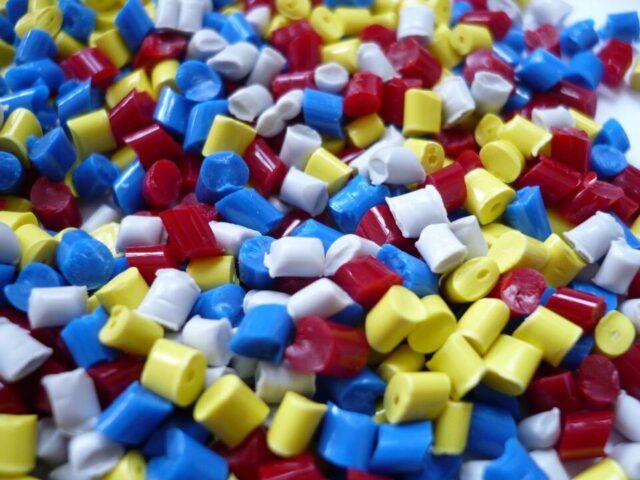OPINION: The time has come for us to stop “recycling” plastic. Plastic as a material is not recyclable, and the very best thing we can do to celebrate Earth Day this year is to acknowledge that fact.
By Eve O Schaub
THE TIME has come for us to stop “recycling” plastic. Plastic as a material is not recyclable, and the very best thing we can do to celebrate Earth Day this year is to acknowledge that fact.
This seems counter-intuitive, I know. We’ve been told for decades that the answer to the plastic-waste crisis is more, better recycling: If only we sorted better! If only we had better access to recycling technologies! If only we washed and dried our plastics more adequately! This is all a smokescreen, designed to distract us from the truth that plastic recycling — if by “recycling” we mean converting a used material into a new material of similar value and function — is a myth.
Unlike paper, glass and metal, plastic is not easily, efficiently turned into new products. What passes for “recycling” plastic is costly, energy-intensive and toxic. On top of all that, the process requires the addition of a shocking amount of new virgin plastic — around 70 percent — to hold the newly formed plastic item together. As a result, only about 5 percent of plastic gets “recycled” (or, more accurately, “downcycled” into a product of inferior quality). Compare that with a 68 percent recycling rate for paper and cardboard.
Considering that, as a society, we’ve been actively trying to get better at plastic recycling since the 1970s, 5 percent represents a colossal, unequivocal failure. It tells us that plastic “recycling” is, at heart, an empty, performative gesture.
Many environmentalists will protest this assertion. They might correctly point out that plastics labelled with the resin identification code of 1 or 2 (the number inside the “chasing arrows” triangle on many plastics) have a higher measure of recycling success: about 30 percent. Shouldn’t we support recycling at least this plastic?
For a long time, I thought so.
But this brings us to another myth: that plastic is harmless to human health. What many people do not know is that plastic is made from two ingredients: fossil fuels and toxic chemicals. When we say toxic chemicals, we are talking about some very bad actors: heavy metals, per-and polyfluoroalkyl substances (PFAS), flame retardants and persistent organic pollutants. Tens of thousands of proprietary chemical formulas are involved in the production of plastic, most of which have never been tested for their effects on human health, although many are known to be endocrine disruptors, fertility inhibitors and carcinogens.
What this means is that even if we were to get better at recycling plastic, we shouldn’t want to.
When you grind up, melt and re-form a bunch of plastic (with the addition of lots of new virgin plastic to bind it together), all those thousands of toxic plastic chemicals combine to make a Frankenstein material that has what scientists call “non-intentionally added substances” in it. Which is to say that chemicals that are not supposed to be there start showing up.
A study last year concluded that recycled plastics contain “an unknown number of chemical compounds at unknown concentrations.” In 2021, a Canadian study concluded that plastic is “not suitable for processing into food grade PCR,” referring to post-consumer resin.
The upshot? You do not want your food wrapped in recycled, mystery-ingredient plastic.
But what if we use recycled plastic only for non-food items such as picnic benches? Then we have yet another deeply troubling aspect of plastic to deal with: microplastics. We’ve been hearing more and more about these lately, because scientists are finding them everywhere they look — in the environment and in the human body.
The chemical composition of all plastic — whatever the type — is a synthetic polymer that doesn’t break down or go away, ever. Instead, it breaks up into smaller and smaller pieces until it turns into microplastics or even nanoplastics. These tiny particles are still plastic, still toxic, but now so small that we are eating and breathing them all the time. Microplastics have been discovered in human lungs, bloodstream and breast milk, as well as in the placenta of unborn babies. Scientists have found microplastics in sperm, testes and the brain.
The effect of all this plastic in our bodies is still being revealed, but we know it is substantial. A recent study concluded that the disease burden from plastic exposure includes pre-term birth, obesity, heart disease and cancer, and the health-care cost was $249 billion in 2018 alone. The human body has become the trash can of our plastics-addicted culture.
Trying to recycle plastic makes the microplastics problem even worse. A study of just one plastics recycling facility discovered that it might be washing three million pounds of microplastics into its wastewater every year — all of which ends up being deposited in our city water systems or dumped into the environment.
At this very moment, we all have microplastics coursing through our bodies. This is not the fault of not enough recycling. This is the fault of too much plastic. So I say: Let’s treat plastic like the toxic waste it is and send it where it can hurt people the least.
Right now, that place is the landfill.
Then we need to get to work on the real solution: making a whole lot less of it.
* Eve O Schaub is an internationally published author and humorist. She is the author of “Year of No Garbage: Recycling Lies, Plastic Problems, and One Woman’s Trashy Journey to Zero Waste.”
– THE WASHINGTON POST








